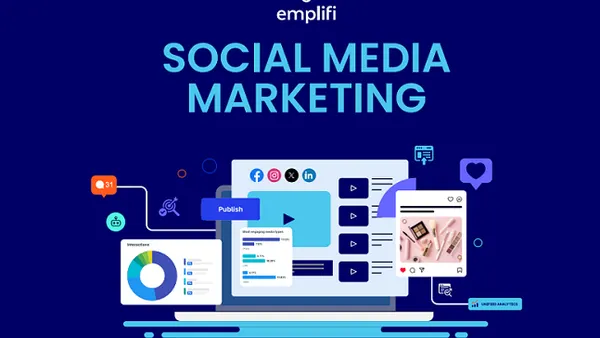
The issues:
The challenges below are the ones I hear about most frequently from social media professionals in this situation:
- Responding to comments on social media posts. This includes thanking those providing positive feedback, and trying to respond effectively to those with negative feedback with a goal of turning that feedback positive.
- Coordinating with customer service teams. This includes addressing customer service and product issues that arrive through social channels.
- Creating content. This might include blog posts, pictures, or whatever is on the social media plan.
- Creating follow-up content. Even if the marketing team is pushing out great marketing content, follow up content is often necessary. When the social media community asks for clarification or additional information it may be the single community manager who has to respond.
- Knowing what to do in difficult situations. This is when something happens in an online community that is larger than a strategists sphere of responsibility. Something they, or the brand, must respond to. For example, a product issue that may necessitate a recall, a customer who claims that their privacy has been breached by actions of the company, or an advertisement for a product that is poorly timed, off color, or perceived as offensive. These types of situations can have public relation and brand health impacts far above the pay grade of the social media strategist whose job it is to respond. Moreover, a poor response can go viral and make a bad situation much worse. This is the point where the solo social media strategist really needs help from their organization.
So what can you do as a social media team of one to help yourself? See below.
- Platforms they connect to: You need tools that can connect with, monitor, and post to the platforms that you use.
- The ability to manage company pages: This is sometimes call posting and monitoring "depth." Some tools can monitor and post to accounts, but not pages associated with accounts. This is especially important if you're managing company pages on Facebook, LinkedIn and so forth.
- Robust and easy content creation: Your tools should allow you to do everything you want to in your accounts including composing text, adding images, embedding videos and so forth.
- Scheduling: It's nice to be able to schedule content to post at the best times for the best fan and following interaction, we strongly recommend a tool that supports scheduling.
- Automation: Lots of tools have different automation features such as automatic favoriting of retweets and auto-replies for following and so forth. Some things can be automated, some things should not be. Our recommendation, look into automation capabilities, but make sure to spend time interacting with your community, or your community will notice, and disengage.
- Built in analytics: The tools should provide analytics that are at least on par with the analytics offered by the platforms you're using. Look at the analytics provided, and information the tool can provide that will make your job easier.
- For more on this, see our 10 keys to finding the right social media tools for you.
When you're considering tools, get the free trials and see which ones work the best for all aspects of your job. Test connection, content creation, community management, scheduling, automation, and analytics.
 All organizations should have a social media policy. It protects the organization because it defines what is allowed and now allowed on the organization's social media sites, and accounts. It protects social media team members because it describes what they can, and cannot do as part of performing job related social media tasks. Remember those difficult situations I mentioned earlier involving brand image or product defects? The first thing you should do when you're attempting to navigate uncharted social media waters is consult your social media policy. It will tell you what you can and can't do, and, hopefully, give you guidance on how get help from other people in your organization. If you follow the policy, the organization will have a difficult time blaming you, even if you've made a mistake.
All organizations should have a social media policy. It protects the organization because it defines what is allowed and now allowed on the organization's social media sites, and accounts. It protects social media team members because it describes what they can, and cannot do as part of performing job related social media tasks. Remember those difficult situations I mentioned earlier involving brand image or product defects? The first thing you should do when you're attempting to navigate uncharted social media waters is consult your social media policy. It will tell you what you can and can't do, and, hopefully, give you guidance on how get help from other people in your organization. If you follow the policy, the organization will have a difficult time blaming you, even if you've made a mistake. Interns are great. These red shirts of the social media playground can be really helpful (don't know what a red shirt is? Click here). I always recommend paying interns, but some organizations' don't. Even when paying, they be very inexpensive. They can create content, and take on other social media related tasks. They can also provide skills you don't have in-house such as graphic design, and videography services. These new skill sets might allow you to add graphics to your content, publish a few infographics, or even create some videos. If you have interns doing public facing tasks such as community management, make sure to train them well, and have them follow triage charts and policies you have in place. Interns can be an easy and inexpensive way to expand your team.
Interns are great. These red shirts of the social media playground can be really helpful (don't know what a red shirt is? Click here). I always recommend paying interns, but some organizations' don't. Even when paying, they be very inexpensive. They can create content, and take on other social media related tasks. They can also provide skills you don't have in-house such as graphic design, and videography services. These new skill sets might allow you to add graphics to your content, publish a few infographics, or even create some videos. If you have interns doing public facing tasks such as community management, make sure to train them well, and have them follow triage charts and policies you have in place. Interns can be an easy and inexpensive way to expand your team.












